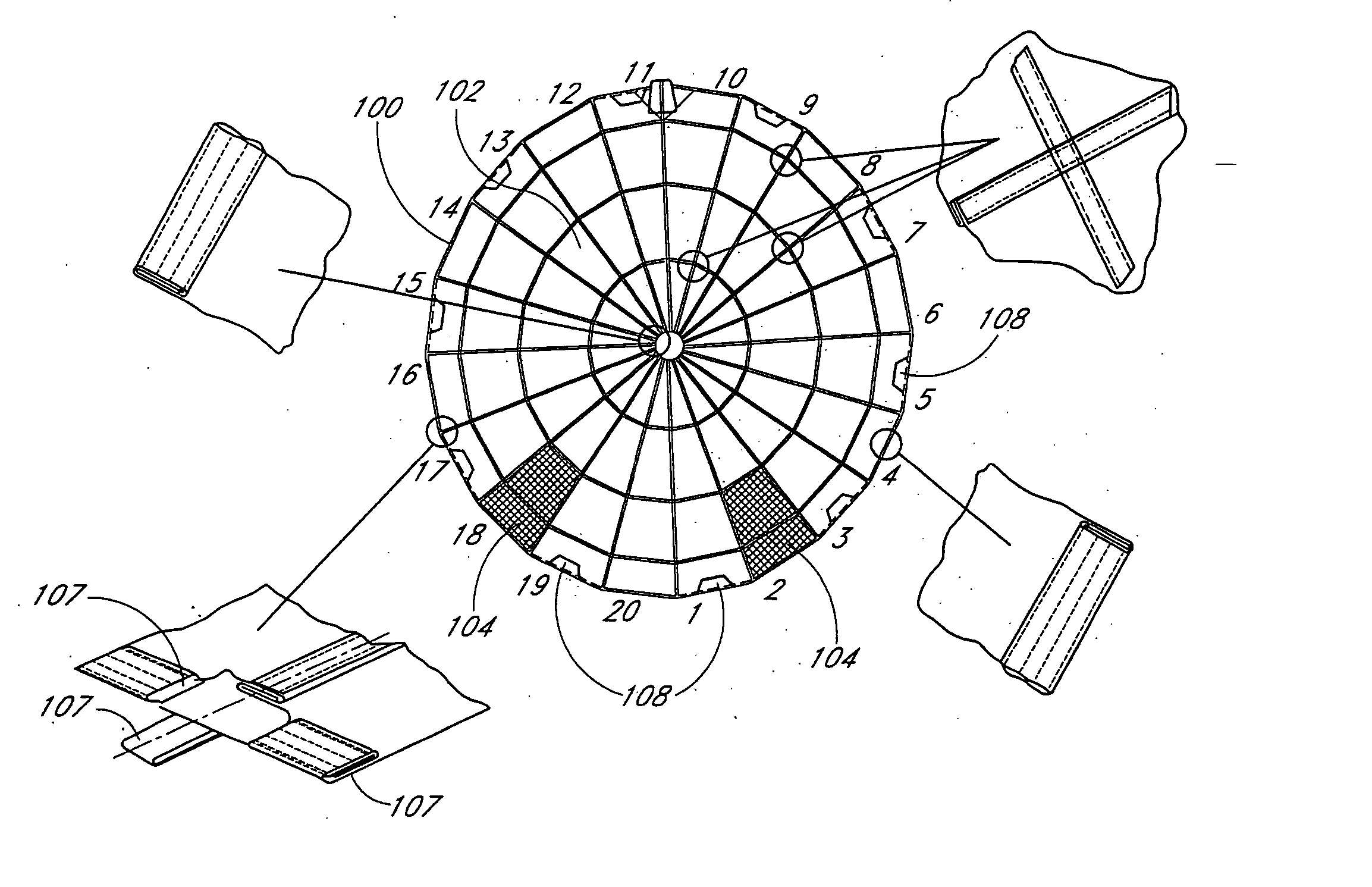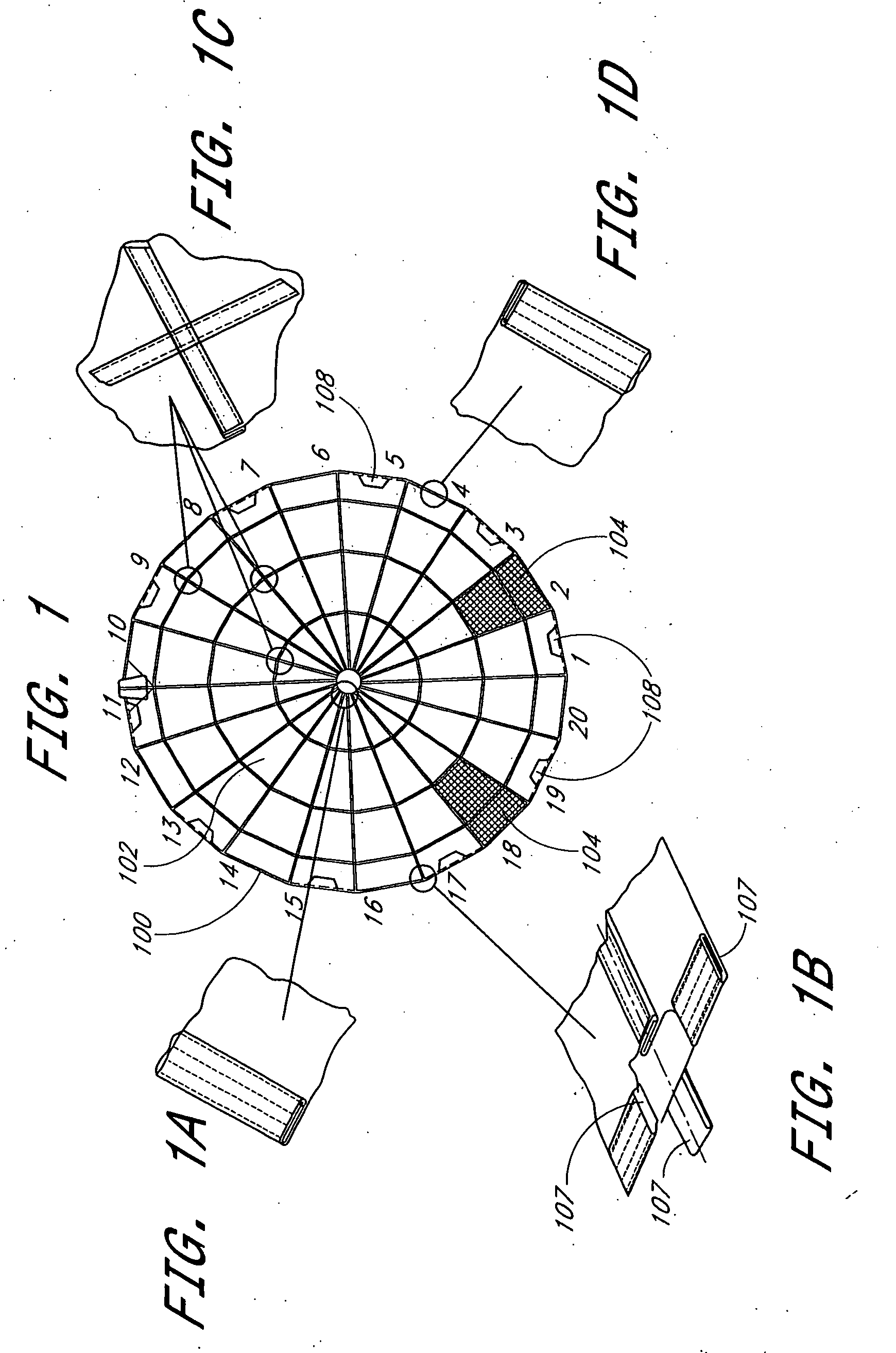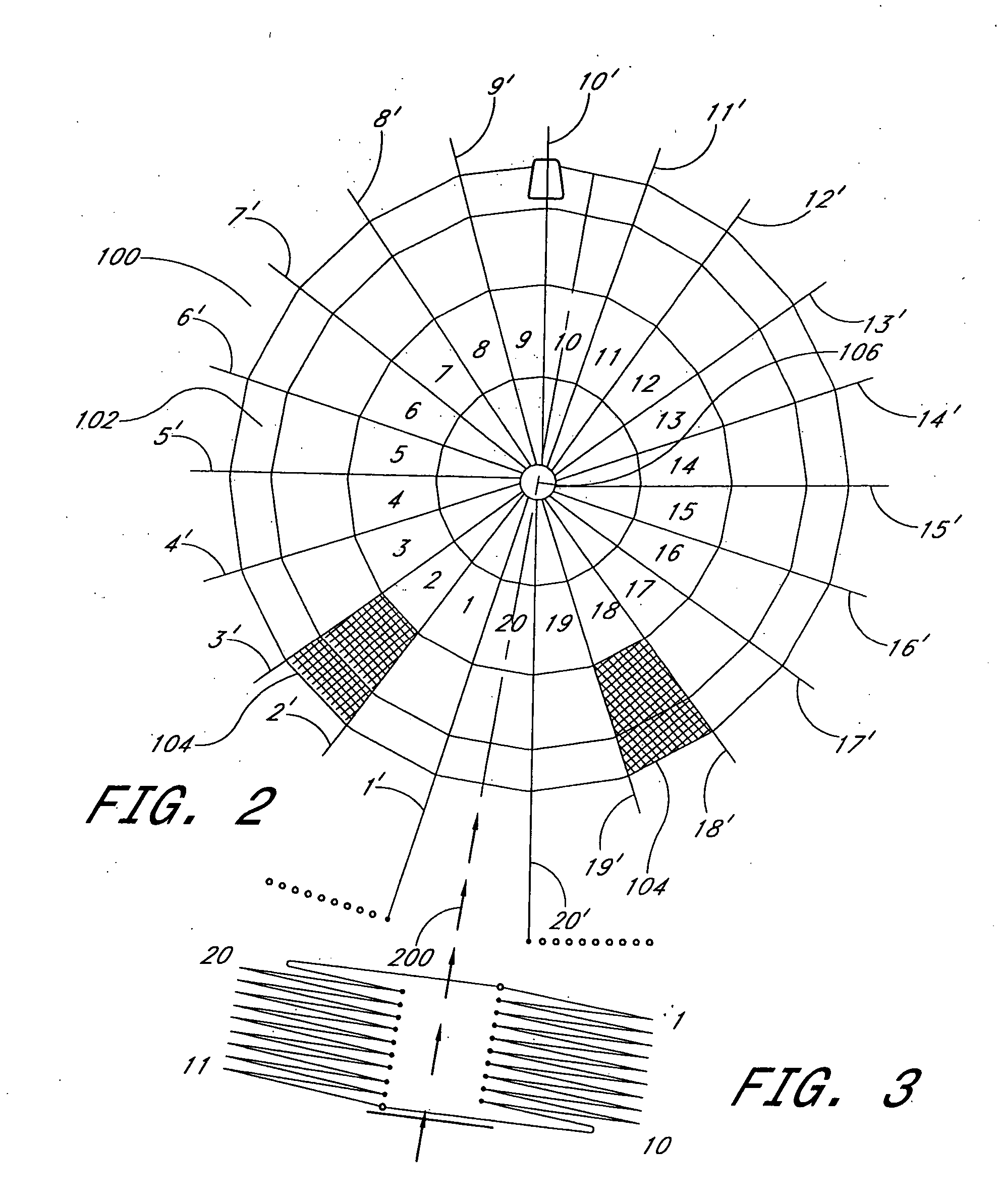Parachute for low altitude deployment
a low-altitude deployment and parachute technology, applied in the field of parachutes, can solve the problems of insufficient opening speed unsuitable parachutes for low-speed deployment, and insufficient stability of standard parachute canopies, etc., to achieve the effect of stable state shape and internal pressur
- Summary
- Abstract
- Description
- Claims
- Application Information
AI Technical Summary
Benefits of technology
Problems solved by technology
Method used
Image
Examples
Embodiment Construction
[0032] With reference to the figures, certain embodiments of the present invention will be described, which embodiments provide parachutes that are particularly adapted for use in low speed deployments at low altitudes, such as emergency evacuations from buildings.
[0033] One particularly preferred parachute features, among other components, a conical canopy that results in a greater internal volume and pressure as compared to many conventional parachute canopies. The greater internal volume and pressure of the conical canopy greatly reduces the pulse effect upon opening of the canopy, which helps stabilize the parachute during descent. A top polar opening in the canopy also helps stabilize the descent of the parachute, by allowing some of the air in the canopy to escape, thereby reducing the amount of air spilling out from the perimeter of the canopy. Two porous sections in the rear of the canopy create two airflow streams during descent, generating forward speed and enabling the p...
PUM
 Login to View More
Login to View More Abstract
Description
Claims
Application Information
 Login to View More
Login to View More - R&D
- Intellectual Property
- Life Sciences
- Materials
- Tech Scout
- Unparalleled Data Quality
- Higher Quality Content
- 60% Fewer Hallucinations
Browse by: Latest US Patents, China's latest patents, Technical Efficacy Thesaurus, Application Domain, Technology Topic, Popular Technical Reports.
© 2025 PatSnap. All rights reserved.Legal|Privacy policy|Modern Slavery Act Transparency Statement|Sitemap|About US| Contact US: help@patsnap.com



